An established ecosystem
When European tech last faced a crisis of this nature in 2000 and 2008, it was structurally weakened and that’s just not the case this time round. The ecosystem is much more resilient and established. There are important structural green shoots appearing already: Europe is closing the early-stage funding gap with the US; Europe is increasing its investment in AI companies and focusing more attention on climate and other purpose-driven companies.

That’s no bad thing, but it won’t be an easy time for everyone. Down rounds will continue to feature and there could be more layoffs. Creating the right conditions for talent, plus deeper and more liquid capital markets, and a policy approach that bets on innovation while managing risk, will be crucial. The rewards could be huge. From this cycle we have the opportunity to build an even healthier ecosystem, with a clearer focus on quality. In the short-term, there will be fewer companies started, but the ones that break through will more likely be winners, with a strong foundation of senior talent and greater share of the region’s resources.
In 2022 we reported the beginning of a new market reality. This trend has continued into the first half of 2023, as total investment volumes in Europe are set to reach around $50B+ for 2023 as a whole, based on activity to date. This represents around a 50% drop compared to the record highs of 2021, and around 38% down on 2022. However, this is still roughly 35-40% ahead of what we saw in 2020 and 2019. Even in a market downturn, Europe is on track to have its third largest year in terms of funding raised.

Though Europe’s investment volume has dropped significantly, it is important to note that this is not unique to Europe; rather, this is a global trend that is mirrored in the US, China, and the rest of the world, each of which record a decrease of roughly 50% when comparing 2021 investment volumes to the 2023 full year forecasts.


Over the past five years, European tech has delivered in excess of $500 billion in exit value. However, this year, like last year, remains stagnant. This creates obvious liquidity challenges at every level - for founders, tech employees, LPs - all of which rely on the flywheel of recycled capital and talent for the progression of our ecosystem. ARM’s plans for a Nasdaq listing, alongside hints from the likes of Vinted and Visma, suggest the IPO window could re-open later this year. Once this window opens, there will be a stong pipeline of high growth firms - and tens of billions in unrealised value - waiting.
The global retraction in investment volumes has a knock-on effect on the flow of capital between regions. In Europe, this has meant a reduction in the volume of capital originating from US investors. At the peak in 2021, each dollar invested by European investors was matched by 66 cents from the US. This is down to around 40% so far in 2023. Later-stage founders raising larger rounds will feel this the most.

Looking across Europe, the slowdown is visible in almost all countries when we compare tech investment in the first half of the year to the same period in 2022. While the Netherlands and Denmark provide some exceptions, we have seen a steep decline in investment levels. The UK has seen a 57% fall, with 55% in France and 44% in Germany.
However, when looking at the tech slowdown in H2'22, and comparing those numbers to the first half of this year, we see a degree of stabilisation. Moreover, despite funding having fallen significantly, the ecosystem remains diversified with over a dozen countries on track for annualised investment levels in excess of a billion.

The funding landscape remains muted and valuation multiples have stayed resolutely low. In the public markets, median enterprise value to revenue multiples for the largest SaaS companies have come down to 5.0x, well below the long term pre covid average of 7.8x.
As a result, founders are adjusting to the new normal. This meant layoffs accelerated at the start of this year. Q1 alone saw 185,000 redundancies globally - 6% of which were in Europe. This compares with just under 10,000 in Q1 22, and 165,000 in the whole of last year.
And as founders finally go out to fundraise, the down rounds we anticipated are beginning to show through in the data. 1 in 5 venture fundraises in Q1 this year were down rounds, compared to barely 1 in 20 a year ago. That’s a 3.6x uptick.

Valuations are now hovering between 5 and 10 year averages, clearly displaying 2021 as the outlier year in this context. Seed valuations display the most resilience, despite volatility in recent quarters. This reversion to longer-term averages also reflects the situation in the US, albeit with median valuations in Europe consistently around 50% lower across stages.

The combined value of private and public European tech companies has bounced back to its 2021 year end high at $3T. While growth has been stagnant for the past two years, the ecosystem has added $2T in value since 2017 and for the past ten years grown at an average rate of 23% per year.

Amidst the funding slowdown, European early stage or sub $15M round funding has stayed resilient. Compared to H1’22, the early stage funding in Europe for the first half year of 2023 is down only 21% from around $10.3B to $8.2B. Yet, the funding slowdown in Europe has largely been driven by later stage rounds.

As entrepreneurial ecosystems continue to be built and grow all across the region, the global share of funding going to early-stage companies in Europe is now at 29%. This is almost at parity with the US, after having nearly halved the gap in the last five years and gained more than 10 percentage points since 2013.

The market downturn is reflected in fewer new tech startups being created. Based on analysis of over 500 million LinkedIn profiles, about 15-20% fewer companies have been created year-on-year, and we’re even further off the Covid-fuelled peak of 2020.

The share of companies being started today by repeat founders, and by experienced operators, are at all-time highs for the European ecosystem. 37% of new founders in the most recent quarter were repeat founders, up materially in just a few years. Similarly, the share of founders that have prior work experience as senior operators has also increased by 8 percentage points from 2018 to 2022.

The European tech talent flywheel is spinning faster than ever. While ten years after founding, the 1990s unicorn cohort employees had started five new startups, then looking at the employees of unicorns born in the 2000s, the number of new startups spun out jumps to 75 ten years after founding. The equivalent goes up to 801 for the 2010s unicorn cohort with the pace of startup creation not showing any signs of slowdown also after.

Generative AI seems to be top of mind for many in 2023 and it has also had a record year in terms of funding. While Artificial Intelligence and Machine Learning has been a staple in Europe for years, capturing 12-17% of all funding per year of the last five years, the share of this funding going to Generative AI has picked up significantly. This year to date Generative AI companies have captured 35% of all funding going to European AI/ML companies, the highest share ever, having previously expanded from 1% in 2019 to 5% in 2022.
Europe is known to be a hotbed for Fintech companies and Financial Services continues to claim the top seat with the biggest share of funding raised in the first half year. Yet Europe is diversifying with other sectors catching up. A year of Financial Services captured 29% of all funding, this has come down to 20% in 2023.
Finally, Europe continues to lead in ‘purpose-driven tech’ - technologies that meet UN Sustainability Goals. Climate and Purpose is the third largest investment theme in 2023 for far. Furthermore, it has secured its highest share of all funding ever at 18%, a significant climb from 15% in the first half year in 2022.

Over the past rolling 5 years, European tech has delivered in excess of $500 billion in exit value across M&A and IPO activity. However, this year, like last year, remains stagnant. So far, we’ve seen $21 billion of exit value in ‘23, mostly via M&A. This includes some larger transactions, such as Transporeon, Reward Gateway and Instadeep. The decrease creates obvious liquidity challenges, placing stress on the ‘flywheel’ which powers the evolution of our ecosystem and the recycling of capital and talent.

Challenging macro will persist, but the reset has created a healthier ecosystem as the industry is stripped back to first principles
More founders will return to market in H2 as runways narrow, sustaining investment volumes, but also more down rounds and consolidation
Exit market could re-open at the end of the year, with a potential IPO window in Q4. Strong pipeline of companies waiting in readiness
Quality of talent at both founder and operator level will continue to strengthen, as fewer, but higher quality new companies are created
AI supercycle to drive a golden age of innovation. European tech will have a key role, and the potential for huge value creation





